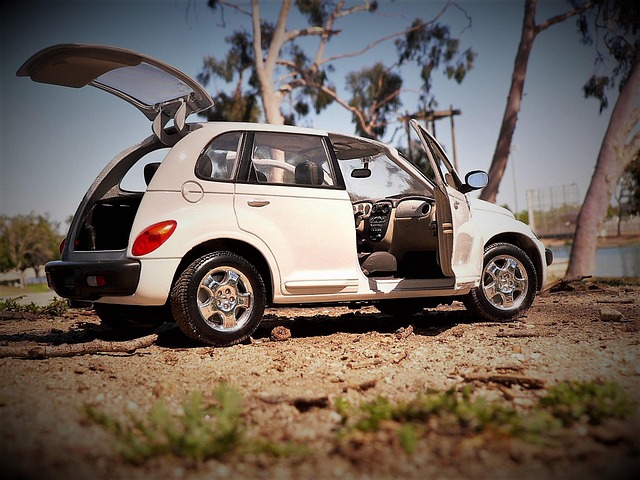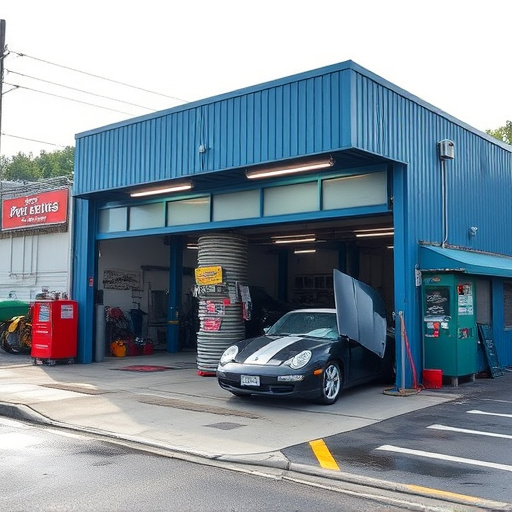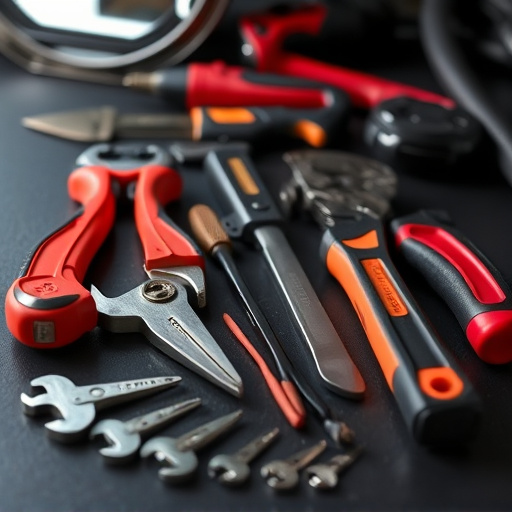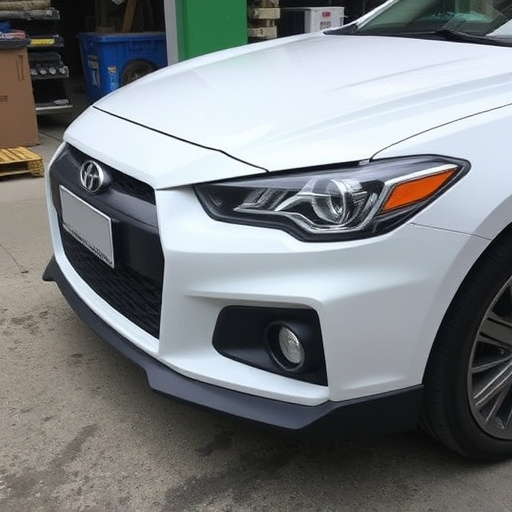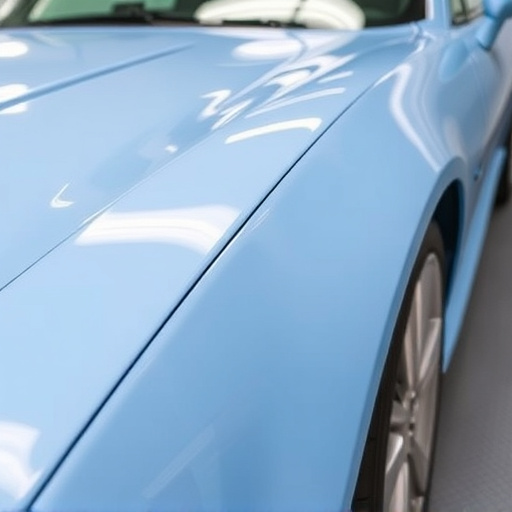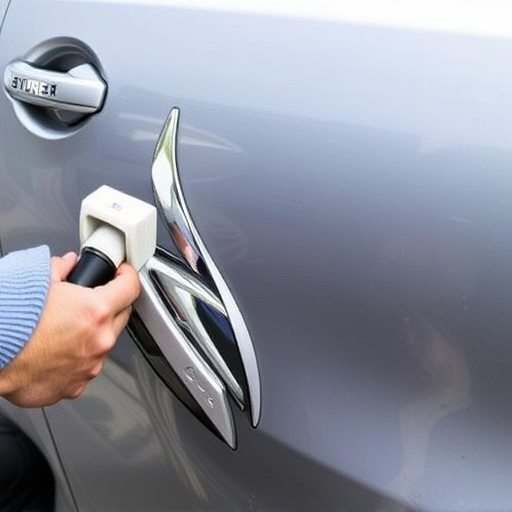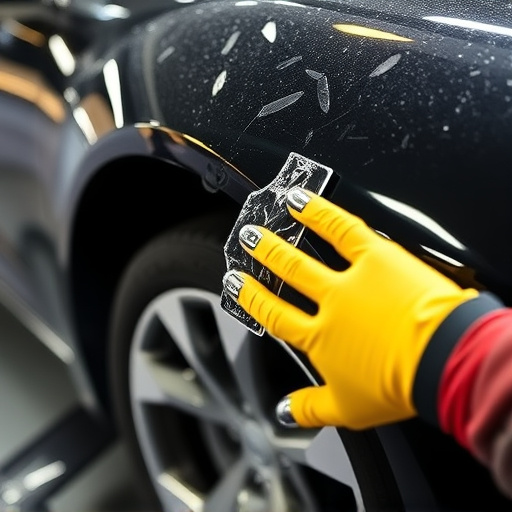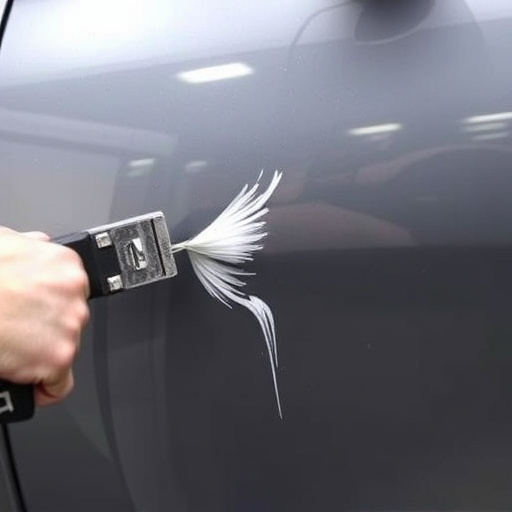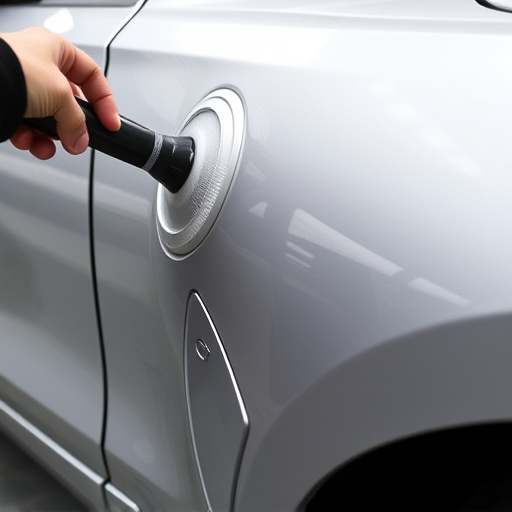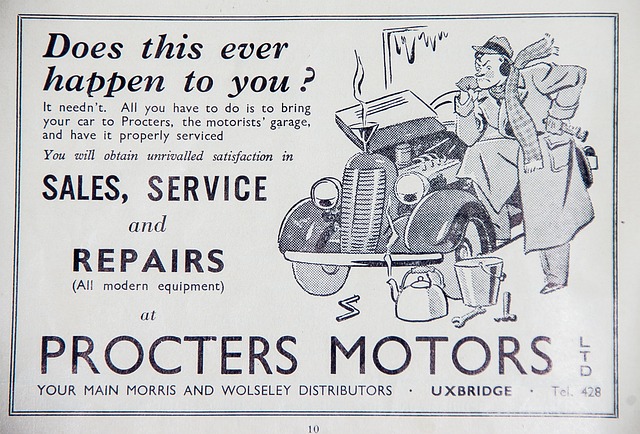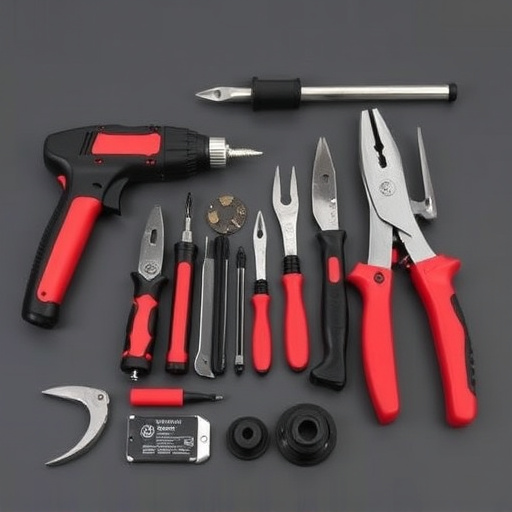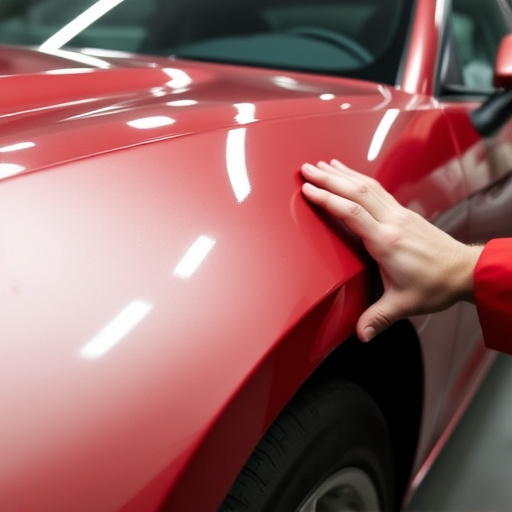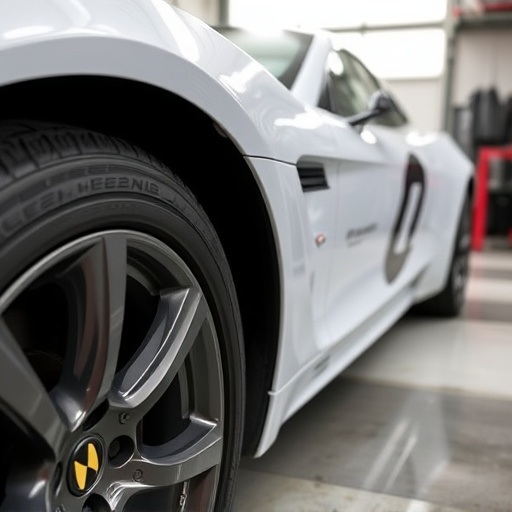Spot welding equipment is a crucial tool for automotive manufacturing and restoration, offering precise control over joint performance with high-energy pulses. Its uniformity prevents structural weaknesses, ensuring vehicle safety. Key components like power supplies, control systems, and electrode configurations work harmoniously to deliver consistent results across different material thicknesses and geometries. Optimizing settings and mastering techniques enhances joint strength and aesthetics in auto body painting and dent repair, ultimately satisfying customers with superior workmanship.
Spot welding equipment is a critical component in manufacturing, ensuring uniform joint performance across various industries. This article delves into the intricacies of how spot welding machines deliver consistent results, starting with an understanding of their role and key components. We explore the impact of each component on overall consistency and provide optimization techniques for achieving uniform welds. By mastering these aspects, manufacturers can leverage spot welding equipment to its fullest potential, resulting in high-quality, reliable joints.
- Understanding Spot Welding Equipment and Its Role in Joint Performance
- Key Components of Spot Welding Machines and Their Impact on Consistency
- Optimizing Settings and Techniques for Uniform Joint Performance with Spot Welding Equipment
Understanding Spot Welding Equipment and Its Role in Joint Performance
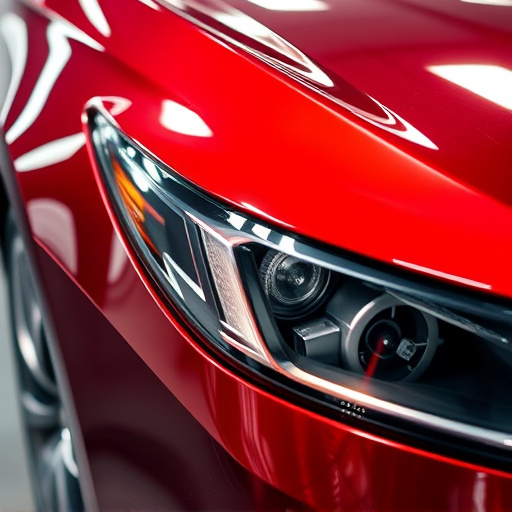
Spot welding equipment is a critical component in ensuring uniform joint performance across various industries, including automotive manufacturing and car restoration. This specialized machinery uses high-energy pulses to melt metal, creating strong bonds between two or more pieces. In an auto collision center or vehicle dent repair shop, these machines play a pivotal role in reassembling damaged cars, maintaining structural integrity, and ensuring the safety of drivers and passengers.
The precision and control offered by spot welding equipment are unparalleled, allowing for consistent weld quality regardless of the material thickness or geometry of the joint. This uniformity is essential for preventing weak points in vehicle structures, which could lead to catastrophic failures under stress or impact. By relying on these advanced tools, professionals in the industry can achieve reliable results in both high-volume production lines and meticulous car restoration projects.
Key Components of Spot Welding Machines and Their Impact on Consistency
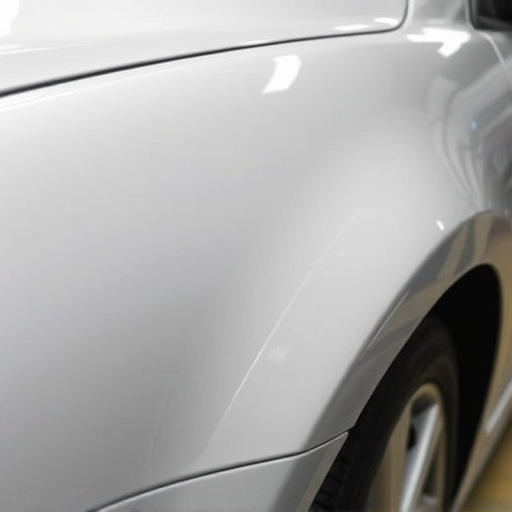
Spot welding equipment is a complex system designed to deliver precise and consistent joint performance. Key components like power supplies, control systems, and electrode configurations play pivotal roles in ensuring uniform welds. The power supply provides the necessary energy to create the bond, while advanced control systems regulate heat input and timing, minimizing variations across different joints. Electrode designs, tailored for specific materials and applications, directly impact weld quality by facilitating accurate current distribution and heat transfer.
These components work in harmony to maintain consistency throughout the welding process, a factor of paramount importance in auto repair services and automotive collision repair. In an auto body shop, where precision and efficiency are crucial, reliable spot welding equipment ensures that each joint meets strict standards, enhancing overall vehicle integrity. By leveraging these technological advancements, professionals in the industry can achieve superior results, streamlining their work and ensuring customer satisfaction in every repair.
Optimizing Settings and Techniques for Uniform Joint Performance with Spot Welding Equipment
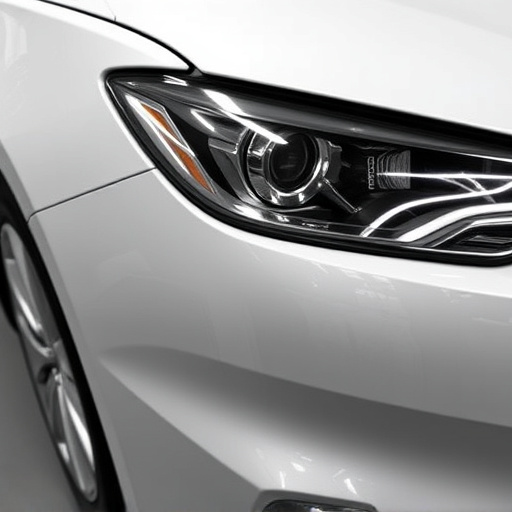
Optimizing settings and techniques on spot welding equipment is key to achieving uniform joint performance, which is crucial for high-quality auto body painting and vehicle dent repair processes in a professional body shop service. By meticulously adjusting parameters like current, voltage, and pulse duration, technicians can ensure precise and consistent welds, eliminating variations that lead to weak or uneven joints.
Furthermore, mastering various spot welding techniques allows for greater control over the joint’s strength and aesthetics. This includes understanding the impact of different electrode types, welding speed, and interpass distances on the final weld quality. With these factors finely tuned, body shop services can deliver superior results in vehicle dent repair and maintain consistent standards across all their auto body painting projects.
Spot welding equipment plays a pivotal role in ensuring uniform joint performance, streamlining manufacturing processes and enhancing product quality. By understanding the key components and optimizing settings, manufacturers can leverage spot welding machines to deliver consistent, strong, and reliable welds across various materials and applications. This, in turn, leads to improved efficiency, reduced scrap rates, and enhanced overall productivity on the shop floor.
